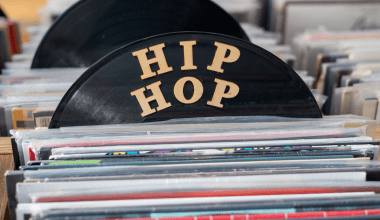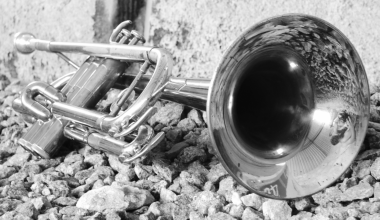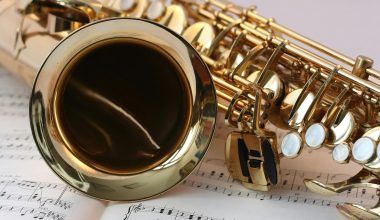Beat samples are small pieces of music or sounds that you can reuse to create your own songs. Imagine cutting a piece of a song you love, like a drumbeat or melody, and using it to build something new. That’s exactly what beat samples do.
You don’t need to play every instrument or record everything from scratch. Beat samples help you save time, add creativity, and make your music sound professional.
Why Are Beat Samples Popular?
Beat samples are like ready-made ingredients in cooking. Instead of starting from scratch, you get a head start with something that already sounds good. Here’s why people love them:
- Easy to Use: You don’t need to be a music expert to use them.
- Save Time: Making beats from scratch takes hours. Samples save you time.
- Creative Freedom: They let you focus on adding your personal touch.
- Variety: You can find samples for every style—hip-hop, pop, EDM, or even classical music.
A Little History of Beat Samples
Beat sampling started in the 1960s and became super popular in the 1980s. Back then, musicians used tape machines to cut and paste sounds. It was a bit tricky, but people loved the new sound it created.
In the 1980s, machines like the Akai MPC made sampling easy and cool. Artists like Public Enemy and Beastie Boys used sampling to create iconic music. Today, it’s a must-have tool for many musicians.
Types of Beat Samples
There are many kinds of beat samples. Let’s look at the most common ones:
1. Drum Loops
Drum loops are rhythmic patterns that repeat. They include kicks, snares, and hi-hats, giving your song a strong beat.
2. Melody Samples
These are short musical phrases, like piano riffs, guitar strums, or string sections. They help set the mood of your song.
3. Vocal Chops
A vocal chop is a small snippet of someone singing. It could be a word, a phrase, or even just a sound. These add emotion and personality to your tracks.
4. Ambient Sounds
Think of rain, birds chirping, or city noises. These samples create a background vibe that can make your song feel alive.
How to Use Beat Samples to Make Music
If you’re just starting out, here’s how you can use beat samples step-by-step:
1. Pick a Digital Audio Workstation (DAW)
A DAW is software for making music. Some popular ones are:
- FL Studio
- Ableton Live
- GarageBand (for Mac users)
2. Find Your Samples
Search for samples online. Websites like Splice, Looperman, or Beatport Sounds have tons of options.
3. Add Samples to Your DAW
Drag and drop your samples into the software. Start with a drum loop for the beat, then layer melodies and other sounds.
4. Edit and Arrange
You can cut, rearrange, or add effects like reverb and delay to make the sample sound unique.
5. Export Your Song
Once your song is ready, save it and share it with the world!
Where to Find Beat Samples
There are plenty of places to find high-quality samples:
- Free Options: Looperman, Freesound
- Paid Options: Splice, Loopmasters, Cymatics
- Custom Samples: Some producers create and sell unique sample packs.
Can You Make Your Own Beat Samples?
Yes, and it’s easier than you think! Here’s how:
- Record Sounds: Use your phone or a mic to record sounds around you.
- Use Instruments: Play a melody or beat on a piano, guitar, or drum.
- Mix and Match: Combine your recordings with effects in your DAW.
- Save as Loops: Export your creations and use them in your songs.
Tips for Beginners
If you’re new to beat samples, here are some tips to get started:
- Start Simple: Don’t overwhelm yourself. Use one or two samples first.
- Experiment: Try different samples to find what works best for your style.
- Match the Tempo: Make sure the sample matches your song’s speed.
- Keep it Legal: Use royalty-free samples or get permission to avoid legal trouble.
How to Make Your Songs Unique with Samples
Using beat samples doesn’t mean your music will sound like everyone else’s. Here are ways to make your songs stand out:
- Chop and Rearrange: Cut the sample into smaller pieces and change the order.
- Add Effects: Use tools like echo, reverb, or distortion.
- Layer Sounds: Combine multiple samples for a richer sound.
- Play Around with Pitch: Make the sample sound higher or lower.
Legal Stuff About Using Beat Samples
Before using a beat sample, it’s important to know the rules. If the sample is copyrighted, you’ll need permission or a license. But don’t worry! Many sites offer royalty-free samples that you can use safely.
What’s Next for Beat Samples
The future of beat sampling is exciting! AI tools are now helping musicians create custom samples in seconds. Imagine typing “happy piano loop” into a tool and getting exactly what you need. The possibilities are endless.
Why Beat Samples Are Perfect for Everyone
Whether you’re a beginner making your first song or a pro looking for inspiration, beat samples are your best friend. They make music creation fun, fast, and accessible to everyone.
So, what are you waiting for? Dive into the world of beat samples, and let your creativity flow. Remember, the best songs start with a simple beat!
Related Articles:
For further reading, explore these related articles:
- The Wonderful World of 4 Musical Instruments
- The Ultimate Guide to Vocal Singing Your Journey to a Beautiful Voice
For additional resources on music marketing and distribution, visit Deliver My Tune.






